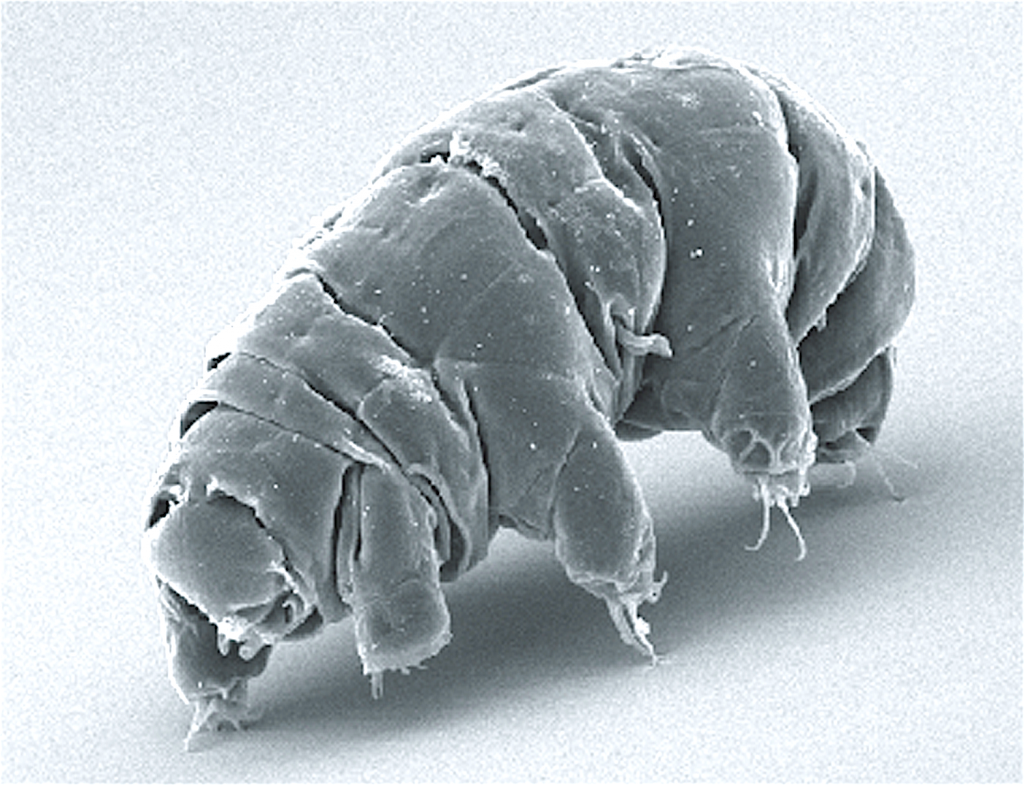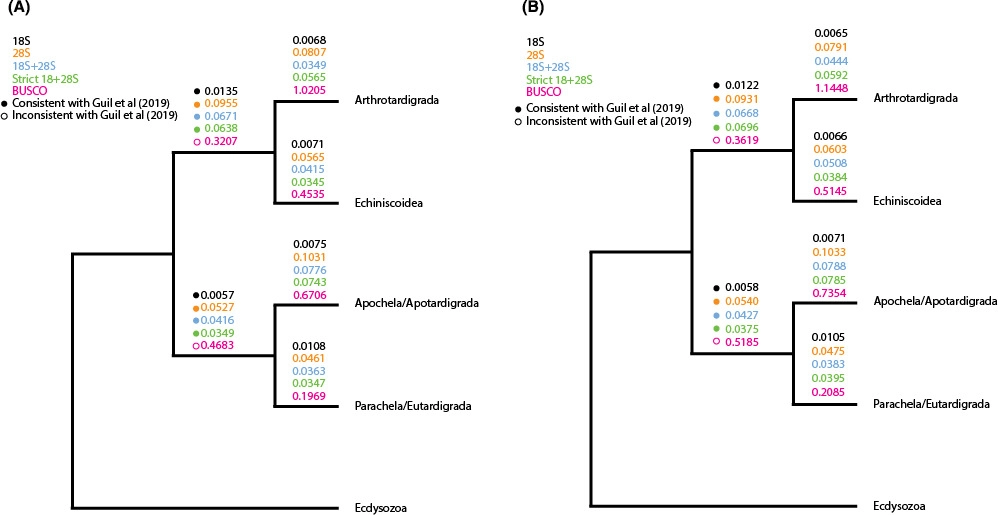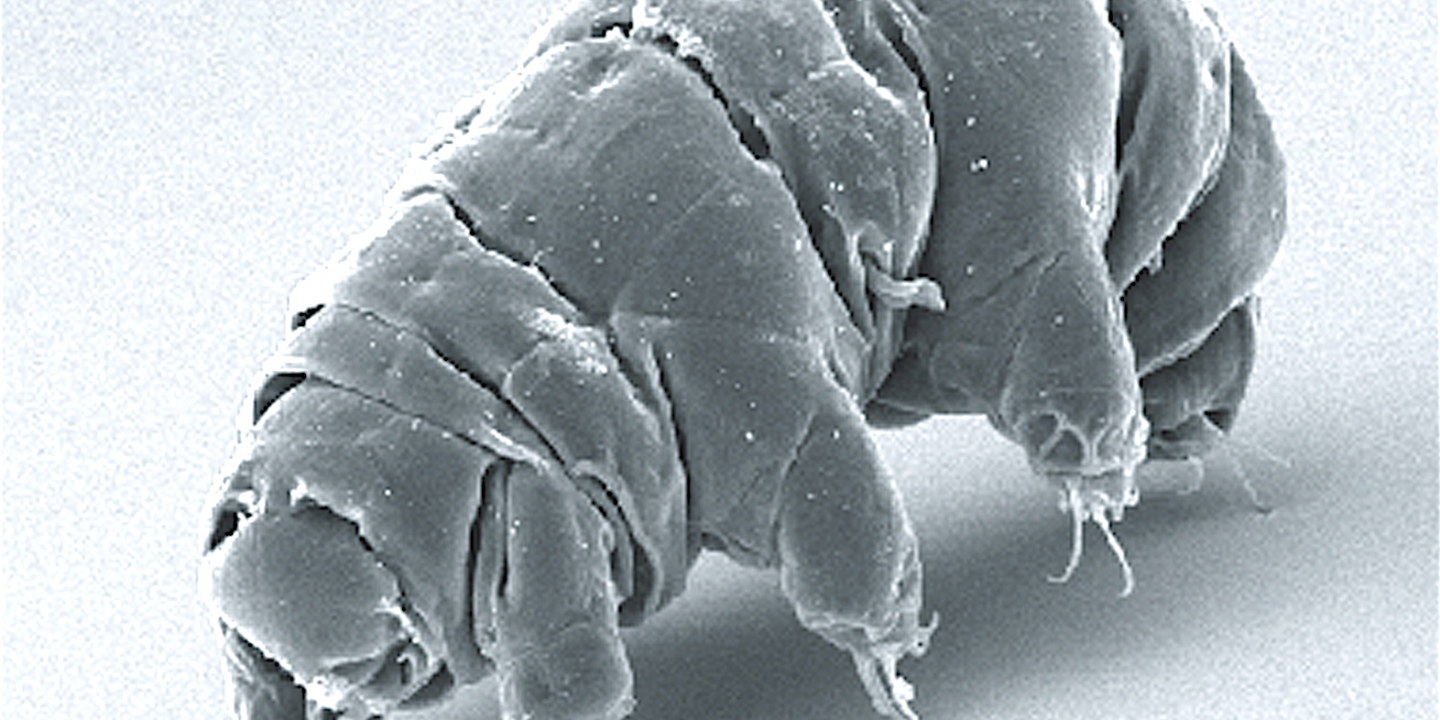
Systematics can be a tricky business, and the tardigrades are no stranger to this! The study of the diversification of life often requires sorting organisms into groups of more or less closely related ones. These groups are called species, genera, families, orders, classes, phylums and kingdoms. Whilst a kingdom is a massive grouping of something such as animals or plants, a class might be something smaller, like mammals. There are also all sorts of added terms like superphylums and subclasses that help when there are useful groupings that aren’t covered by just those simple terms. As you can imagine, there is often a lot of debate between systematics workers about not just which groups are more closely related to one another, but also about what kind of group an arrangement of organisms might be. These debates are primarily about what we should call a given arrangement of living things, and how we should teach others about them. They help form a scientifically-informed common vocabulary that is useful across the world so that we can communicate easily between other researchers and public.
Tardigrades are a group of Ecdysozoa – the large grouping of animals that includes a great diversity of animals such as the roundworms and the arthropods – the insects, crustaceans, spiders and their relatives – among others. Recently, they have attracted a lot of media attention for their ability to withstand incredibly high and low temperatures and pressures, dessiccation and high levels of radiation. However, despite this new interest, we don’t actually have that much genetic data about them yet! So recently, a lot of labs have been gathering new genomes and transcriptomes, and learning much more about them. In some cases, this has resulted in us needing to revise our understandings of how the tardigrades are related to one another – and then what we names we need to agree on for these different, sometimes entirely new, groups of tardigrades!
One instance of this debate is the core of my new paper about tardigrades. In the past, tardigrades have been divided into three classes – the heterotardigrades, eutardigrades and mesotardigrades (though the mesotardigrades consist of only one species that hasn’t been found since the 1930s, so some think it doesn’t exist). From there, they are divided into orders. For the heterotardigrades those are the Arthrotardigrada and the Echiniscoidea, whereas for the eutardigrades, those are the Apochela and the Parachela. Recently, Guil et al (2019) showed that if we build a phylogeny (a tree of relationships between living organisms) from the conserved genes 18S and 28S (genes that are slow to change, and so are useful for building trees of relationships over long periods of time), then we find that Arthrotardigrada and Echiniscoidea split into those two orders much later than the eutardigrade orders, Parachela and Apochela, do. They argued that this means that Apochela and Parachela should be classes, not orders, functionally moving this part of tardigrade taxonomy up one level. They called the new order – the old Apochela – Apotardigrada, and Parachela became all of Eutardigrada.
For this new paper (Systematics of Tardigrada: a reanalysis of tardigrade taxonomy with specific reference to Guil et al (2019)), we reanalysed the data from 18S and 28S, and then analysed a number of other conserved genes known as BUSCO genes (Benchmarking Universal Single-Copy Orthologs). BUSCO genes are a big library of many sequences often used by biologists to measure the quality of a genome, because high-quality genomes will probably include a very high percentage of BUSCO genes – hence the “Universal” part of the name. We found that while we obtained the same pattern as Guil et al (2019) when we analysed 18S and 28S data, even using different methods to the ones they used, we didn’t find that pattern when we analysed the BUSCO genes. Instead, we found that, according to the BUSCO genes, Arthrotardigrada and Echiniscoidea are roughly as closely related to one another as Apochela is to Parachela.
Ultimately, we came to the conclusion that we thought that changing a large part of the common vocabulary of how we talk about tardigrades wasn’t warranted based on the new evidence, as the 18S and 28S genes and BUSCO genes disagreed on how closely related the different orders were from one another. However, I am sure this debate will continue in the future and will be a lively part of tardigrade scientific discourse in the years to come, as we decide on new names for old groups and how to best present and describe the science of these charismatic, incredible creatures to the world.

![]()

2 Comments on “A new paper on tardigrades! What’s in a (scientific) name?”